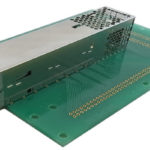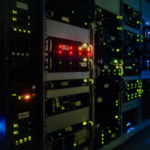IEEE 802.3’s progressing “Moving Beyond 400Gb/s Ethernet Study” group members held a highly interactive and successful video webinar in conjunction with Lightwave with an excellent question and answer sections. This was a 100+ page three-hour rich experience meet up with key observations, data, and current conclusions from various industry leaders.
After the recent EA’s TEF, some of these presenters continued the process of sharing, gathering, and validating Voice of Customers, Clients, Technologists, Developers, Evangelists, Suppliers, and the rest of Industry voices.
These presenters provided a much deeper dive into the challenges of developing technologies, testing, specifications, solutions that will support 206/212g per lane electrical signaling with interoperable products. This session covered electrical and optical interface current best analysis thru stimulation and measurement.
The key consensus takeaway was many developers agree that having the number of optical lanes match the number of electrical lanes for 212G Link interfaces and components is the best Link performance, cost solution, and time to market. But will there be two electrical PHY types? It seems that the QSFP-DD and OSFP MSAs are working hard to validated heat/cooling profiles and power, electrical and optical integrities that will support 212G x 8 lanes for 1.6T Pluggable Links.
Key trends
Straw poll surveys reveal DC operators currently expect most technologies and products to have two-year backward compatibility and three-year use before they get torn out and replaced with newer, higher performance, possibly low-powered products. Next-generation optical components are needed to scale link rates. Here are some changes recommended by Lumentum:
Futurewei forecasts reduced use of TOR/MOR switches and increased use of Spine switches. See the chart below with my red-font markup:
IM-DD PAM-4 200G per lane can be sent over 4 fibers or 4 single wavelength lambdas. But at 1600Gbps, Coherent technology may use less power than IM-DD LR and SR per the Google chart below:
Problems
Some good news is that it appears that PAM-4 is fine and seems to be strongly favored for optical signaling, so it may easier for 224G optical product development and achieving time to market. However, for short active copper reaches and signaling, PAM-4 currently uses too much power to compete. So evaluation of other modulation methods is in progress. If optical is PAM-4 and active copper is PAM-5 or PAM-6, some costly bridging or gearing would likely be needed. 96G PAM-5 is feasible per John Calvin of Keysight Technologies, but that would increase power consumption which is not very acceptable. So modulation decisions need to be agreed on soon. This could be a potentially complicated problem to keep aware of. CWDM4 is limited by fiber chromatic dispersion.
FEC types and values need to be determined. Some speak of evaluating segmented FEC to keep the power profile in check. Double stack OSFP and QSFP-DD receptacle connectors with mated OE modules need a thorough thermal analysis and electrical signal integrity review and concurrence of specifying for a baseline spec clause.
Solutions
New fiber technologies besides hollow fiber are being developed for improved performance yet again. The Optical Society’s Ursula Gibson recently shared that her Lab group is developing new smaller-sized fibers with better flexibility and performance, so more suitability for fiber circuit boards and various modules. These will provide smaller diameter fiber cable bundles for inter-rack and inter-row trunks. One of these novel fibers has a longer wavelength transmission capability. New types of Silicon cores are annealed during the foundry-drawn fiber process. Some fibers have been tested for higher and more efficient power transmission. That may portend a new specification set for optical Power over Ethernet and optical Power-over-USB Type D future interconnects.
More advanced fiber locating techniques, tooling, and machines enable faster process throughput and yield and a higher level of automation of multi-fiber fusion termination to connectors and directly to chips. Optical test equipment Manufacturers are working on advanced automation inline production testing systems.
It seems 500m DR8 (PSM8) is implementable with low-cost SiPh technology and 1km CWDMA4 is implementable with low-cost InP technology. Perhaps 200G per optical lane could be technically ready within two years per Google.
Some observations
The IEEE.org has joined the GenZconsortium.org. This potentially enables the faster and larger flow of best-measured data, margins, parameters, performance, spec completeness, time to market, and interoperability. It seems new optical MSA groups will drive new interconnect product types through specification details and interoperability to a high degree before putting into consortia and standards like IEEE and OIF specifications.
GenZ architecture and interconnects were designed to handshake easily with Ethernet, so maybe they need to work closely on the 200+G specifications? Both groups have finalized their individual 100+G technical specifications and are garnering Final Release approvals of their 100+G specifications. Possibly a BoF (Birds of a Feather) group at least could be working concurrently on 200+G per lane specifications development.
Recent acquisitions like II VI buying Coherent and Marvell buying Inphi seem to indicate that major optical device suppliers need to expand their product offerings quickly and optimize market share in changing and growing market segments. For some market segments, 800G Links are already late, and the demand is growing well. Some users foresee having 512 switch radix links, so many more ports likely.









Leave a Reply
You must be logged in to post a comment.